#frank marryat
Text
YE SKIPPÈRE

With artistic credit to Frank Marryat, one of the Captain's sons: an utterly ridiculous 1840s portrait of Frederick Marryat at home in Langham, Norfolk where he spent his last years.
This isn't the first time I've shared Frank Marryat's art, he also drew "A Happy Family." Both pictures are reproduced in Tom Pocock's book Captain Marryat: Seaman, Writer, and Adventurer—but only in the print version, not the ebook—and are printed in greyscale, although they may have originally been in colour. The source is given as the National Maritime Museum, Greenwich, but I can't find any references on the NMM website.
In the spirit of Eighteen-Forties Friday, Frank's artwork of his father demonstrates that 1840s pop culture was not only fascinated with medieval aesthetics: they could also spoof it in Ye Olde Memes. Marryat holds "ye snuffe" tobacco in one hand, and "ye Peter Simple" and "ye Jacob Faithful" represented as scrolls in his pocket are "ye wittie sayings." He has ye mansion (Langham Manor Cottage, no longer standing), ye croppes, and ye Dumple—his slightly notorious pet horse, Dumpling.
And there is literally a snail. (You can't have medieval marginalia without one!) The bottle of "ye soda" on the ground was unexpected, but soda fountains in pharmacies existed at the time, and sweetened carbonated beverages as well as mineral waters were commercially produced and sold in the early 19th century.
#frederick marryat#captain marryat#1840s#Eighteen-Forties Friday#frank marryat#marryat family#victorian#medieval memes#early victorian era#biography#tom pocock#captain marryat: seaman writer and adventurer#frank drew another pseudo-medieval pic of one of marryat's friends in langham#rip frank marryat you would have loved the internet
22 notes
·
View notes
Text

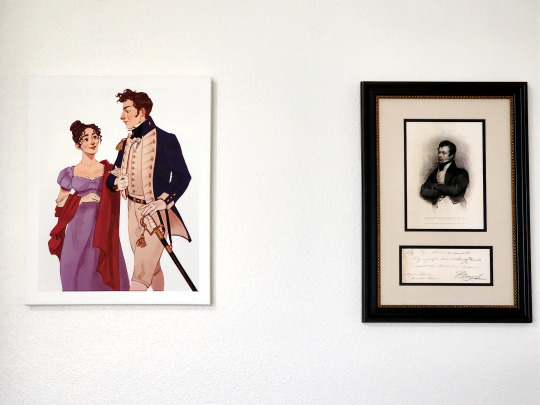
My new desk/study area coming together very nicely, feat. Captain Marryat's portrait and signed cheque complimented by @elyksina art of Frank Mildmay.
#shaun talks#frederick marryat#frank mildmay#my original idea for the commission was frank romancing some random girl in halifax (which is canon)#but it could also be his canon love interest and future wife emily somerville#the marryat corner with his gary stu
44 notes
·
View notes
Text
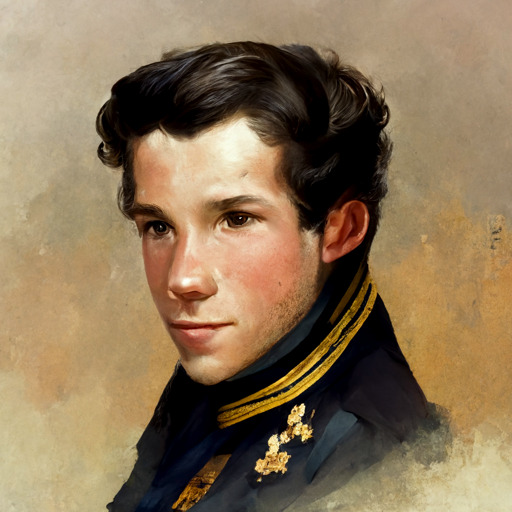
The Naval Officer Frank Mildmay
"I was now in my twenty-second year; my figure was decidedly of a handsome cast; my face, what I knew most women admired. My personal advantages were heightened by the utmost attention to dress; the society of the fair Arcadians had very much polished my manners, and I had no more of the professional roughness of the sea, than what, like the crust of the port wine, gave an agreeable flavour; my countenance was as open and as ingenuous as my heart was deceitful and desperately wicked."
-- Frederick Marryat, Frank Mildmay, or The Naval Officer
generated from the text prompt
"young proud handsome arrogant smirking Royal Navy naval officer"
and image prompts of:
the naval novellist captain frederick marryat
and a picture of ioan gruffudd as hornblower
using the neural network AI midjourney
with a few edits and tweaks post-generation
with thanks and inspiration to @marryat92
37 notes
·
View notes
Text
Okay per the recommendations from @marryat92 I downloaded Frank Mildmay and this note in the preface is so funny??

#shipposting#frederick marryat#frank mildmay#this honestly has me so excited to read the rest of this#what kind of book is he trying to write? what kind of book did he actually write??#stay tuned i guess
2 notes
·
View notes
Text
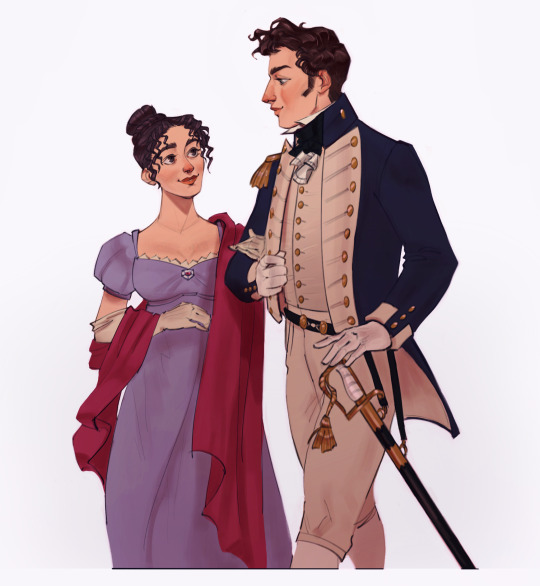
1812 Frank Mildmay & companion. Commission for @clove-pinks!
#character art#marryat#captain marryat#Frank mildmay#art#sketches#commission#napoleonic#historical fashion#fashion history
246 notes
·
View notes
Text
Captain Marryat and his signal system
He has been called the father of modern nautical fiction, but Frederick Marryat (1792-1848) had a number of strings to his bow including an adventurous career around the world as a naval officer which he started 1806, serving in the Mediterranean, the West Indies, the East Indies and North America.
And in an age when swimming was not a widespread skill he saved the lives of more than a dozen sailors by diving into the sea to rescue them and was awarded a gold medal from the Royal Humane Society.

Portrait of Frederick Marryat, by Henry Colburn 1848 (x)
In 1817 Marryat published his Code of Signals for the Merchant Service, an adaption of Sir Home Popham's navy signalling system of 1803. Unlike the Popham system, which needed several numeral flags, thereby a word, the Marryat system simplified it. In his system, there was a flag for each of the digits 0 to 9, determined by shape and colour, as well as individual group pennants, which varied the meaning of the number flags. Each ship was assigned a four-digit number between 1 and 9876 as well as one of the two (first) groups, whereby no digit was included twice in the individual ship number. In the event of a signal, the individual ship hoisted its group flag one above the other and below it, in turn, the number flags for the assigned number. With the group pennant for geographical places and their number flags placed at the top, a ship could signal its origin, for example, while a destination port indication was signalled by the position of the same group pennant at the bottom.

Marryat’s Signal System (x)
Shipowners who wanted to participate in the signal system had to join the Marryat organisation and then also received the extensive code books.In order to have enough leeway in terms of quantity, there were initially two groups, with which a total of 19,752 ships could thus be registered. Later, parallel to the two number groups for merchant ships, further groups were introduced for British and non-British warships, a number group for lighthouses, ports and other geographical locations, as well as a number group for standardised message sets. This system was also the basis for the Universal Yacht Signals published by the Royal Yacht Squadron in 1847. Marryat's system for the merchant navy was so popular that it was in use unchanged until 1879, even though it had been officially replaced by the International Code of Signals in 1857, which was largely based on Marryat's original conception.
Marryat himself continued writing even at sea and had published a three- volume novel, The Naval Officer, or Scenes and Adventures in the Life of Frank Mildway. He left the Navy in 1830 to cencentrate on his literary career and went in to write over ten more books, including a number of children's titles. All in all, he wrote over 25 books and spent his last years from 1843 onwards on a country estate in Langham in Norfolk, where he died after years of health problems at the age of only 56 on 2 August 1848.
If you want to know more about Captain Marryat, his life and his literary works, you should definitely visit @marryat92 and follow right away, because you can't get more Marryat than this.
42 notes
·
View notes
Text
Another literary contrubution of mine for Midshipman Monday, but this time, the aged admiral, on his way to subdue the town of Boston in the spring of 1774, recalls his own, far from happy days as a midshipman in the late 1730s, inspired to some extent by the classic 'midshipman tales' of the early days of C. S. Forester's Hornblower, Patrick O'Brian's The Golden Ocean, and perhaps even Frederick Marryat- at least in so far that young Samuel Graves is the exact opposite of the handsome, dashing Frank Mildmay.
Some slight warnings for period typical attitudes towards, among other things, religion and being (percived as) Irish, mild violence and derogatory language.
He was at sea again- at sea—! The breeze, the fine air- ‘twas what he had long missed, he realised, and although he had been so utterly happy at the Fort, and retained a certain melancholia when thinking of those left behind on shore (parting with Bridget and the infant Mary, his grand-niece, and particularly little Eliza Gwillim had been an abominably sorrowful affair), he was very glad of the timbers below his feet, and the billowing, white sails above.
A ship could by no means be called a place of refinement, or comfort: no-one who had ever smelt bilge-water or had found a weevil in his biscuit could say so. The confined space, the hard work and barely supportable lodgings made not for an elegant living— but he minded it not.
Elegance had never been part of his expectation for life: it had been known to him since the day of his birth that his was to be a life defined by his own doings, his own merit, always outshone by the deeds of three brothers older than he.
When his uncle had graciously provided him with the opportunity to leave the fogged obscurity of the Irish countryside and provided him with a letter of recommendation, he had been awfully glad, for he had thought himself never much cut out for any other profession. He had lacked the patient studiousness and deliberate, deceptive cunning to make a lawyer like his cousin William or a man of the cloth like his brother John, and he would never have joined the army, knowing that his grandsire had been murdered in that service, having never felt any desire to be pierced through the heart with a rascal’s bayonet or knife, and stabbed to death in his bed as well as the late poor Captain James John Graves.
The Navy had been the correct choice for him, and within no time, he had taken to sailing rather naturally. It was almost with a wistful fondness not unlike that he felt for his godsons and little niece that he thought of Mr. Graves, the Mid: an awkward young fellow, he recalled, a little too old (God d—m the years of his youth spent managing Gravesend and its lands at an age when other boys would frolic and play with little care in the world) of very few words and eager to please, yet not succeeding as often as he should have liked.
Having never been a man of particular eloquence, he had resigned himself to watching, and observing his new mess-mates. The latter had not been well pleased with this new addition to the midshipmen’s berth, another boy to compete for the captain’s attention and preferment, and shewed him their open dislike. His “lowering looks” and “sullen mien” were often commented on, though with age, he had realised there could have been done but little in that regard, for his face naturally bespoke his name, with features more severe and strong than the rubicund roundness so well-liked in a young countenance.
“…He, Graves?” He had not condescended to respond to whatever question (insulting, or making merry on his expense, no doubt) had been thrown his way on that particular night so many years ago, when he was freshly come on board and had been at sea for less than a month. He had been reading, and not paid attention to the game of cards or the conversations of the other mids that filled their berth with noises of public merriment that, like a ship without anchor, drifted and strayed from its course. From constant and inevitable observation he had come to expect that whatever had been said had not been of great substance, and almost certainly directed against him.
“Does the Teague know English?” one of them had asked in mockery of his quiet study of a book and wilful ignorance of their conversation, his voice raised like one desperately wishing to make himself understood to a foreigner without knowing their language and another replied, smirking: “Nay, they are all savages there, and Papists; though I believe those are much the same things.”
All of them knew full well he knew English— in fact, it was the language he had been accustomed to from birth, and could but identify two, or three words in the Irish, or Erse, as it is called by learned men, which he had heard spoken as a boy in back-alleys at country-fairs and the like. And his father had been a Man of the Cloth, a better Christian no doubt than this wretched set of dissipaters, drinking and playing cards for money with their meagre pay.
“I am no Teague”, he had barked indignantly, and risen to his feet. “Oh, but you are”, he was replied to with the smirking satisfaction of on thinking themselves quite superior on account of having dealt a smarting blow, “you sure talk like one.”
It was then that his patience was totally exhausted: for too long had he endured in martyred silence the malicious commentary of his fellow midshipmen, had accepted their dislike with resignation— he could not bear it any longer. He was aware that the boy who had insulted him was smaller than he, and lighter by three stone at least. His father had taught him to oppose violence against another man, to dislike fighting, but the late Reverend Graves’ words were but faint, inconsequential echoes in his ears when his first blow was struck, and the impertinent comrade’s nose broken.
He had proceeded to administer a sound drubbing to make certain no other would ever dare to insult him again, and made an example of the lad, whose swollen face had revealed his crime to the first lieutenant, who in turn had dragged him before their captain by the scruff of his neck, which he feared to have snapped this next instant by the captain's hands not unlike like that of a fat goose destined for the Christmas table at home in Gravesend.
The captain had, to his luck, done nothing of the sort, and instead berated him for near an hour, to make it plain such behaviour should not be tolerated aboard his ship, and he be disrated at the faintest whisper of another such fight. And did he know, the young sir, how such could easily be punished under the Articles of War? His captain had dealt to him a kinder fate; night-watches and some time in the main top-gallant cross trees had been enough to satisfy him in the knowledge that Mr. Graves would not shew disobedience again.
If those days when he had been but nineteen, and freshly at sea had been the worst of his service, then this present commission ought to be his best: although he was reluctant to harbour too much optimism, for one could never tell what might happen, he could not fully bridle the elation of having been given so prodigious a Command as the North American Station.
#midshipman monday#samuel graves#american revolution#british history#r writes#history#amrev#historical fiction#fiction writing#american revolutionary war#naval history#naval fiction
19 notes
·
View notes
Text
There are certain events in our lives poetically and beautifully described by Moore as “green spots in memory’s waste.” Such are the emotions arising from the attainment, after a long pursuit, of any darling object of love or ambition; and although possession and subsequent events may have proved to us that we had overrated our enjoyment, and experience have shown us “that all is vanity,” still recollection dwells with pleasure upon the beating heart, when the present only was enjoyed, and the picture painted by youthful and sanguine anticipation in glowing and delightful colours. Youth only can feel this; age has been often deceived—too often has the fruit turned to ashes in the mouth. The old look forward with a distrust and doubt, and backward with sorrow and regret.
(Frank Mildmay, or, The naval officer, Marryat)
7 notes
·
View notes
Photo
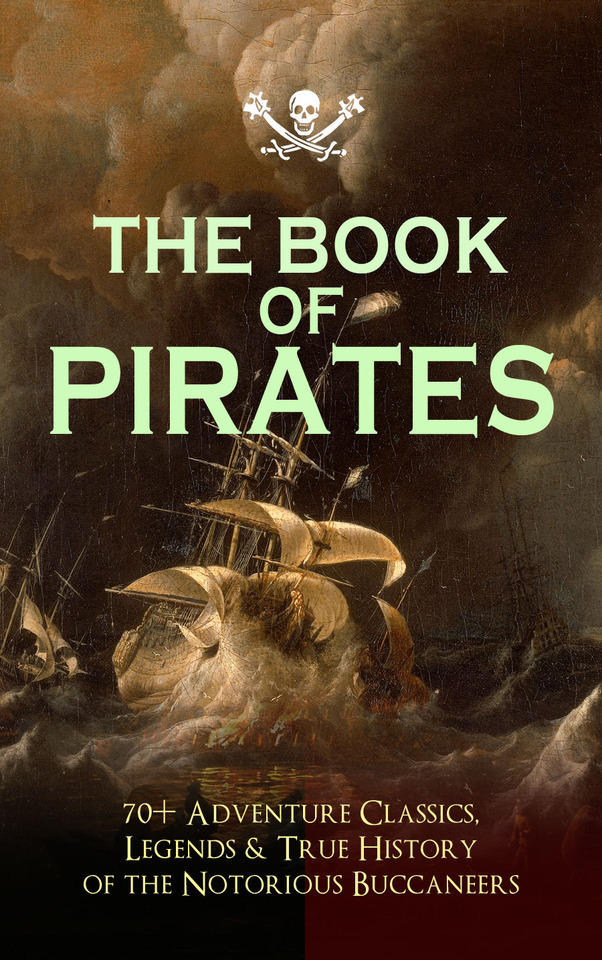

Just got this new book! I am beyond excited to delve into these stories...
Enjoy the best sea adventures, treasure hunt tales and bloody battles, along with learning the truth behind the legends, the real life stories that inspired so many writers and produced so many beloved classics: History of the Robberies and Murders of the Most Notorious Pirates (Captain Charles Johnson) The Book of Buried Treasure Treasure Island (R. L. Stevenson) Blackbeard: Buccaneer (R. D. Paine) Pieces of Eight (Le Gallienne) Captain Singleton (Defoe) Gold-Bug (Edgar Allan Poe) Hearts of Three (Jack London) The Dark Frigate (C. B. Hawes) Isle of Pirate's Doom (Robert E. Howard) Swords of Red Brotherhood (Howard) Queen of Black Coast (Howard) Barbarossa—King of the Corsairs Black Vulmea (Howard) Afloat and Ashore (James F. Cooper) Homeward Bound (Cooper) Red Rover (Cooper) Facing the Flag (Jules Verne) A Pirate of the Caribbees (H. Collingwood) Pirate Gow (Daniel Defoe) The King of Pirates (Defoe) The Pirate (Walter Scott) Rose of Paradise (Howard Pyle) Captain Sharkey (Arthur Conan Doyle) The Pirate (Frederick Marryat) Three Cutters (Marryat) Madman and the Pirate (R. M. Ballantyne) The Offshore Pirate (F. Scott Fitzgerald) Coral Island (Ballantyne) Under the Waves (Ballantyne) Pirate City (Ballantyne) Captain Boldheart (Dickens) Master Key (L. Frank Baum) A Man to His Mate (J. Allan Dunn) Tales of the Fish Patrol (Jack London) Robinson Crusoe (Defoe) Peter Pan and Wendy (J. M. Barrie) Mysterious Island (Jules Verne) Count of Monte Cristo (Dumas) Ghost Pirates (W. H. Hodgson) The Pirate Island (H. Collingwood) Among Malay Pirates The Capture of Panama, 1671 The Malay Proas (James F. Cooper) The Daughter of the Great Mogul (Defoe) Morgan at Puerto Bello The Ways of the Buccaneers Narrative of the Capture of the Ship Derby, 1735 (Captain Anselm) The Fight Between the Dorrill and the Moca Jaddi the Malay Pirate The Terrible Ladrones The Female Captive The Passing of Mogul Mackenzie Sea-Wolves of the Mediterranean Pirates of Panama ...
3 notes
·
View notes
Text

The discipline of public schools, bad and demoralizing as it is, was light, compared to the tyranny of a midshipman's berth in 1803.
— Frederick Marryat, The Naval Officer (Frank Mildmay)
Thomas Luny, A British frigate backing her sails as she heaves-to approaching Torbay with other ships of the fleet beyond, 1803. (Wikimedia Commons)
#frederick marryat#captain marryat#age of sail#frank mildmay#midshipman monday#thomas luny#frigate#royal navy#midshipman#1803#naval history#maritime art#marine art#seascapes
25 notes
·
View notes
Text
They should stop having sad soggy pathetic boat men tournaments and start having Smug Obnoxious Jerk Boat Man tournaments. I nominate all of Captain Marryat's protagonist characters and also Marryat himself.
#frederick marryat#captain marryat#i'm thinking about#frank mildmay#jack easy#percival keene#i like to pretend i live in a world where people know marryat and his works
21 notes
·
View notes
Text

It’s not Midshipman Monday for me anymore, but have some very amateur art of my ghost captain character as a hypothetical midshipman! I was inspired by reading Marryat’s Frank Mildmay (The Naval Officer) and Mr Midshipman Easy because those books are just full of asshole teenage midshipmen who keep getting into Shenanigans
I think that as a midshipman he would have been an arrogant bully who, after some incidents involving duels and near death experiences, might have calmed down and learned some measure of kindness and humility… or maybe just how to pretend to be humble.
I got an IRL friend into watching MaC (and now they’re reading the first book yeeeeees) and they asked me if the ghost ship has any midshipmen. My first instinct is to say there’s no midshipmen or chaplain, partially because I didn’t want to overcomplicate the cast list and maybe because it could be a thematic thing that the ghost ship has no faith or hope (in the form of youth), but my friend was saying that it would be creepy to have the midshipmen acting out their roles nonsentiently like the rest of the ship’s sailors, and that is a tempting idea! Gambolling and skylarking and learning, but not so vivid or bright as the chained officers…
Anyway maybe I should make an actual midshipman character (possibly removed from the ghost ship story). Middies are fun!
#cadmus rambles#cad talks about sbs#cadmus draws#this is my blog and i have a disclaimer saying i can post whatever i want#even if it is my terrible art#i tried to run this through the image generator to make it better but… it did not work out
20 notes
·
View notes
Text
Family Of Thomas Church (1798-1860) Singapore
I am looking for descendants of Thomas Church (1798-1860) to share some information.
Son of Thomas Church & Elizabeth Dixon.He married Elizabeth Scott Of Penang.
His issue:-
i) Harriet Georgina Church (1827-1898) married Walter Stuart Mann. Their issue:-
ai) Annie Florence Mann (1850-1941) married Thomas Vincent Fegan.
aii) Horace Butterworth Mann (1851-1909).
ii) Robert Church (1828-1904) married Sarah Church Waller.
iii) Thomas Ross Church (1830-1926) married Florence Marryat(1833-1899).Their issue:-
ai) Eva Florence Ross Church (1855-1887) married Alfred Stevens.
aii) Ethel Maude Church (1857-1952) married Edmund Nicholas Alpe and Ernest Walter Russell Barry.Their issue:-
bi) Ethel Mary Florence Alpe(1876-1958) married Edwin Chappell.
bii) Edmund Francis Ross Alpe (1879-1944).
aiii) Frederick Francis Marryat Church (1859-?) married Elizabeth H. Spiller.His issue:-
bi) Catherine Mary Church(1904-1979) married Reginald Sidney Crabb.
Their issue:-
ci) Paul Crabb (1926-?) married ?.
His issue:-
di) Colin Crabb.
cii) Reginald B Crabb (1927-1928).
bii) Patricia Marguerite Joan Church (1906-1990) married Frank Henry Bailey Fyfe.
Their issue:-
ci) Dorothy Marryat Fyfe married ? Stewart.
aiv) Florence Charlotte Henrietta Church (1860-?).
av) Voilet Theodora Church (1863-1953) married Stanley Locker Dobie.Their issue:-
bi) Marryat Ross Dobie (1888-1973) married Grace Vera Patmore.
His issue:-
ci) Alison Roxburgh Dobie married Anthony Allan Montgomery.
bii) Beatrice Shedden Dobie (1900-?) married Allan D. Macdonald.
Their issue:-
ci) Robert D Macdonald(1929-?).
avi) Sybil Catherine Florence Church (1866-1958) married 1stly,Gerald Edward Lyon Campbell & 2ndly, Wentworth Vernon Cole. Their issue:-
bi) Mary Hamilton Campbell (1888-?) married Alfred Thomas Duncan Anderson.
Their issue:-
ci) Ian Duncan Hamilton Anderson (1916-?)
cii) Alec Vernon Anderson(1921-?).
avii) George Marryat Ross Church (1868-1940) married Emily Whymper.His issue:-
bi) Robert Henry Ross Church(1904-1975) married Barbara Joyce Byers.
His issue:-
ci) Armorel Barbara Church married Fergus David Hanham.
ci) Marryat Ross Church(1936-1941).
cii) Martin Byers Church(1939-2008) married Diane C Perry.
His issue:-
di) Alexander Philip Ross Church.
dii) Daniel Thomas Ross Church married Olivia Stockdale
His issue:-
ei) Felix James Ross Church.
ciii) Valentine Ross Church(1941-2008) married Anne E Mouland.His issue:-
di) Marryat Frederick Ross Church.
dii)Benjamin Robert Ross Church married Jessica Groves.
bii) Barbara Theodora Church(1910-?) married Hugh Joseph Gray.
Their issue:-
ci) Brigid Penelope Gray married 1stly Anthony Bart Nesburn & 2ndly,Carl M Leventhal.
aviii) Marguerite Ross Church (1872-1951) married Harry Oliver Whymper.
iv) Hannah Church (1834-1852) married Samuel Gordon.
Their issue:-
ai) David Birdwood Gordon(1849-?)
aii) Elizabeth Catherine Gordon(1851-?) married William Charles Hilditch.
Their issue:-
bi) Edith Mary Ann Hilditch (1870-1871).
v) Charles Wright Church (1835-1890).
vi) Sarah Scott Church (1837-1909) married Captain Malcolm Kemp Bourne.Their issue:-
ai) Robert Kemp Bourne (1863).
aii) Mabel Frances Bourne (1866-1950).
aiii) Malcolm Stuart Bourne (1867-1940).
aiv) Percy Trevor Bourne (1867-1893).
vii) William Marryat Church (1841-1842).
viii) Edward Winter Church (1843-1875).
Please contact me at :- [email protected]
0 notes
Text
Image taken from page 313 of 'Frank Mildmay ... Illustrated by H. R. Millar. With an introduction by David Hannay'
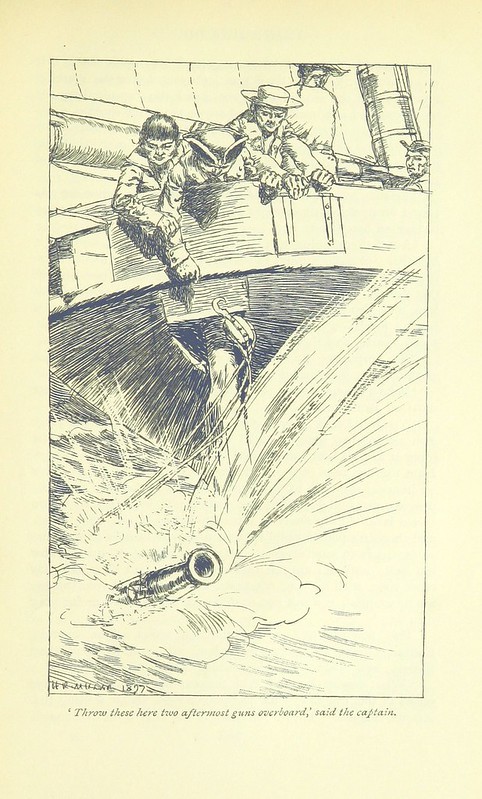
Image taken from:
Title: "Frank Mildmay ... Illustrated by H. R. Millar. With an introduction by David Hannay", "Single Works"
Author: Marryat, Frederick
Contributor: HANNAY, David.
Contributor: MILLAR, H. R.
Shelfmark: "British Library HMNTS 012624.g.15."
Page: 313
Place of Publishing: London
Date of Publishing: 1897
Publisher: Macmillan and Co.
Issuance: monographic
Identifier: 002391243
Explore:
Find this item in the British Library catalogue, 'Explore'.
Download the PDF for this book (volume: 0) Image found on book scan 313 (NB not necessarily a page number)
Download the OCR-derived text for this volume: (plain text) or (json)
Click here to see all the illustrations in this book and click here to browse other illustrations published in books in the same year.
Order a higher quality version from here.
from BLPromptBot https://ift.tt/3aRZdKg
0 notes
Photo
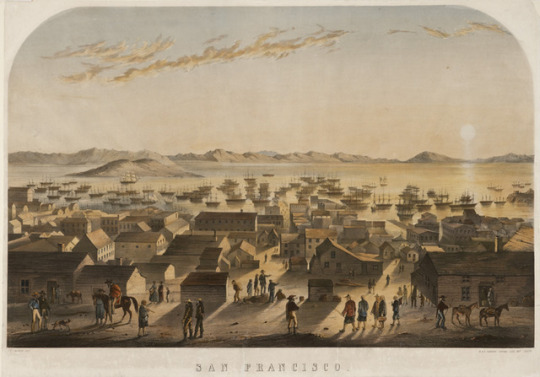
San Francisco waterfront by Frank Marryat, published in 1851.
A sailor, author and artist, Frank Marryat sailed from England to California in 1850. His sketches and writings about San Francisco and the Gold Rush were published in Mountains and Molehills, or Recollections of a Burnt Journal, in which he wrote a description the SF fire of 1851.
70 notes
·
View notes
Photo
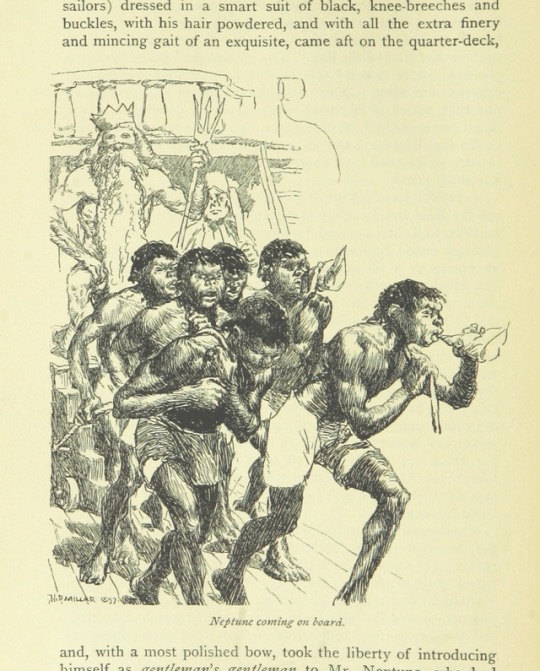
Image from 'Frank Mildmay ... Illustrated by H. R. Millar. With an introduction by David Hannay', 002391243
Author: Marryat, Frederick
Page: 184
Year: 1897
Place: London
Publisher: Macmillan and Co.
View this image on Flickr
View all the images from this book
Following the link above will take you to the British Library's integrated catalogue. You will be able to download a PDF of the book this image is taken from, as well as view the pages up close with the 'itemViewer'. Click on the 'related items' to search for the electronic version of this work.
#bldigital#bl_labs#britishlibrary#1897#similar_to_178047685922_place_of_publishing#similar_to_178047685922_slantyness#similar_to_178047685922_bubblyness_avesize
0 notes